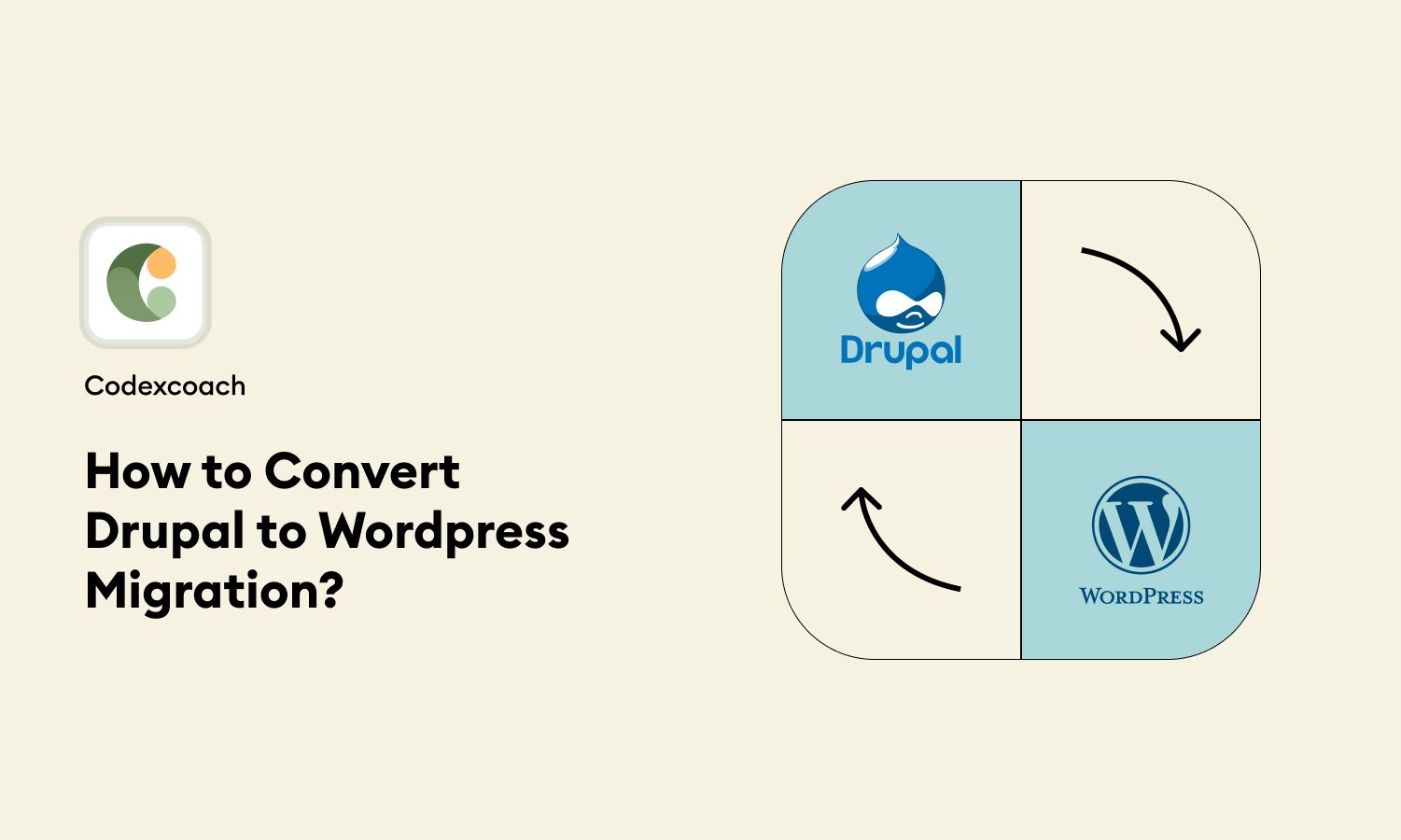Converting a website from Drupal to WordPress is a significant undertaking that involves careful planning and execution. In this comprehensive guide, we’ll walk through the entire process of Drupal to WordPress migration, covering each step in detail to ensure a smooth transition.
Introduction
Drupal and WordPress are both powerful content management systems, each with their unique strengths. Migrating from Drupal to WordPress can offer a more user-friendly interface, a wide range of themes and plugins, and a large community for support. This guide will help you navigate the Drupal to WordPress migration process smoothly.
Know more: 8 Best WordPress Backup Plugins For 2024
1. Preparation and Planning
A. Backup Your Drupal Site
Before starting, create a complete backup of your Drupal site. This includes all files, the database, and any custom code you might have added. A backup ensures that you have a fallback option in case anything goes wrong during the migration process.
B. Analyze Your Drupal Setup
Understand the structure of your Drupal site. Take note of the content types, user roles, modules, and any custom features or functionalities that your site has. This will help you plan how to replicate or adapt these elements in WordPress.
C. Set Clear Migration Goals
Decide what needs to be migrated (content, users, SEO settings) and what can be reconfigured or left behind. This step is crucial for a focused and efficient migration process.
2. Setting Up WordPress
A. Install WordPress
Set up a fresh WordPress installation. Choose a hosting environment that matches your current Drupal site in terms of performance and capabilities.
B. Select a Theme
Choose a WordPress theme that suits your website’s aesthetic and functional needs. You can opt for a theme that closely matches your Drupal site’s design or take this opportunity to refresh your website’s look.
C. Configure Basic Settings
Adjust the basic settings in WordPress, such as permalinks, to mirror your Drupal site’s URL structure. This is important for maintaining SEO rankings.
D. Install Necessary Plugins
Identify and install plugins that will provide functionalities similar to your Drupal modules. This might include SEO tools, security plugins, custom post types, and any specific features your site requires.
3. Migration Process
A. Manual Migration
For smaller sites, manual migration might be feasible. This involves manually creating pages and posts in WordPress and copying content from Drupal. Images and other media files will also need to be uploaded manually.
B. Automated Tools
For a more efficient migration, consider using automated migration tools or services. These tools can transfer your content, users, and other important data from Drupal to WordPress. They handle the bulk of the work and can significantly reduce the time and effort required.
C. Custom Scripting
In cases where your site has complex custom functionalities, you might need to develop custom scripts or hire a developer. This approach ensures that all your bespoke features and data structures are accurately replicated in WordPress.
4. Content Migration
A. Migrate Posts and Pages
Ensure all your posts and pages are correctly migrated. This includes text, images, and any embedded content.
B. Transfer Media Files
Media files like images, videos, and documents need to be moved to the WordPress media library. Ensure that these files are correctly linked in your posts and pages.
C. Custom Post Types and Taxonomies
If your Drupal site uses custom content types, you’ll need to recreate these in WordPress as custom post types and taxonomies. This might require additional plugins or custom coding.
5. SEO Preservation
Maintaining your search engine rankings is a critical part of the migration. Ensure that your WordPress site maintains the same URL structure. Use redirection if any URLs change. Migrate all SEO metadata, including page titles, descriptions, and alt tags for images. Consider using an SEO plugin to help manage these elements efficiently.
6. Final Steps and Testing
Once the migration is complete, thoroughly test your WordPress site. Check for broken links, ensure all content is correctly formatted, and verify that all functionalities are working as expected. Pay special attention to forms, interactive elements, and user login functionalities.
Conclusion
Migrating from Drupal to WordPress can seem daunting, but with careful planning and execution, it can lead to a more manageable and user-friendly website. Follow this guide to ensure a smooth transition, and don’t hesitate to seek professional help if needed. Happy migrating!






